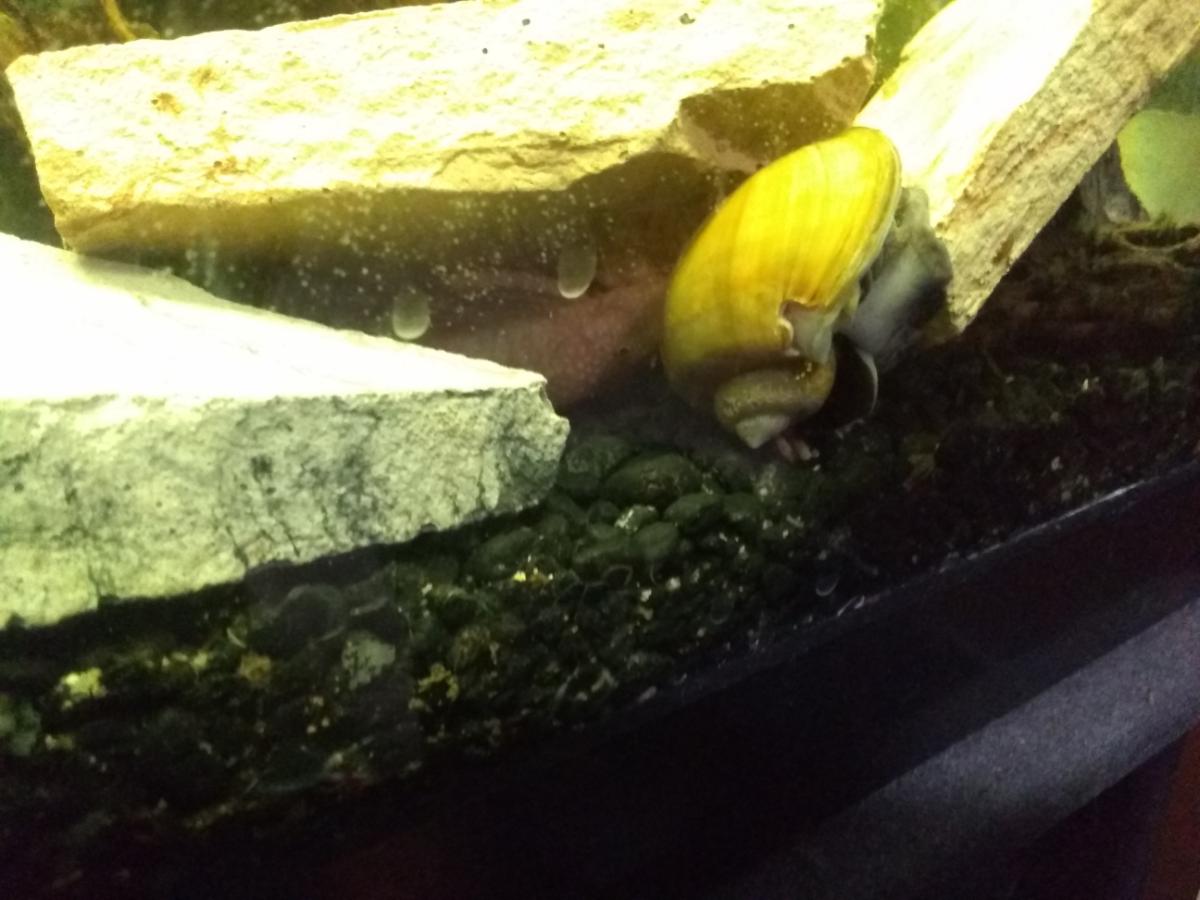At least one of the “male” snails I bought last month is a female.
I know this because I keep finding clutches of eggs above the waterline.
As soon as I find out who the culprit is, she’s going back to the aquarium shop.
Recently, one of the three died. (I wonder if an assassin snail got to it, but I will never know. Assassin snails are little, so it’s unlikely, I think.) If it was her, I’ll see no more egg clutches. If it wasn’t, I’ll have two suspects, and will watch them closely for above-water excursions.
Most snails are hermaphrodites, but these aren’t supposed to be. Hermaphrodite snails can change their gender to reproduce if there isn’t a female around. They can self-impregnate, too. Great. Just great. Among the snails that can’t do this are apple snails and periwinkles. I think mine are apple snails, but I’m not sure. I will be watching like a Great Eye in the Sky to be sure these two don’t successfully place any more egg clutches.
The freaking Malaysian Trumpets (I bought eight) are giving me a run for my money on their own. Every few days I have to dig out the ones that get big enough to see readily. I only cull them when I know I can get 100 or more. I usually get 200 or more. My assassin snails and yolo loaches don’t appear able to keep up! Trumpet snails are very pretty but they are prolific. If I allowed them to get overcrowded, their excrement would foul the filter and the substrate and the fish and frogs and crawdads would begin to suffer and die, and no way can I have that. I enjoy watching them sooo much!
All Mexican Crayfish remain alive, and there is at least one baby, too
I recently spotted all four Mexican crayfish, and a wee one, so one of the females must have arrived carrying eggs under her tail. I was very surprised to see a wee one this soon. It’s was so small I thought I was seeing things at first (a tiny slip of a reddish-orange leaf, too small even for a camera to catch) but then a fish swam by and it jumped up into an overhanging plant and hung there. They are very susceptible to predation when they’re that small, so I don’t know how many will survive, but we’ll see. I have lots and lots of hiding places for wee ones, that’s for sure.
The four adults are sure active — out and about — during the day. They scuttle all over the tank looking for goodies to eat. When the two males (I assume) meet, they act like little bulls, dancing around each other like, “get outta my way, dude!” One of them quickly surrenders and scuttles away. They don’t do battle, per se. They just posture as if they’re about to.
I can lose myself for an hour just watching the various beings swim, scuttle or walk about in there.




